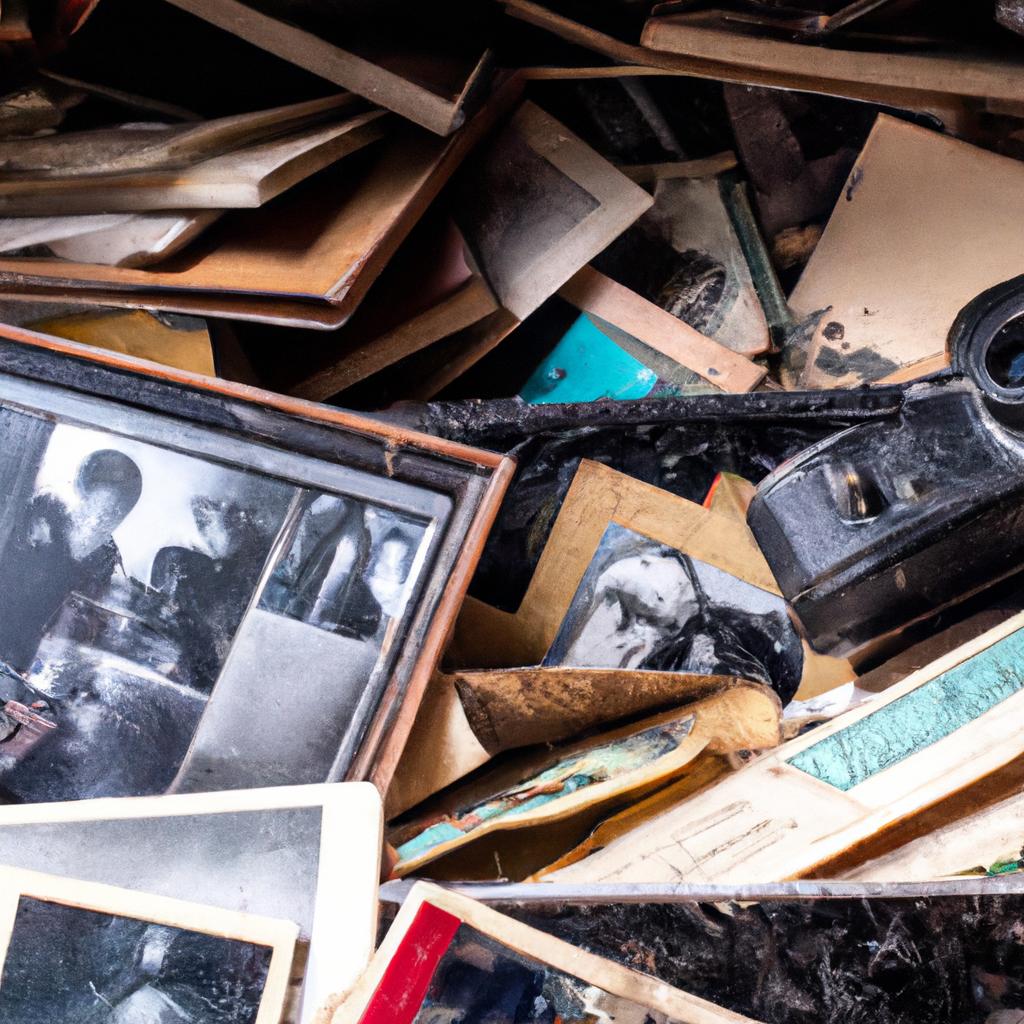Documentary photography is an important tool in helping to capture and preserve our culture, history and memory for generations to come. It allows us to document the world around us in a way that words simply cannot do justice. Through documentary photography, we are able to capture unique moments that tell the story of people’s lives. It can also be used to contextualize historical events and document changes in society over time.
Documentary photography can be used to tell powerful stories about times gone by and provide a unique perspective on the world as it currently stands. For this reason, it is essential that photographers are familiar with the principles behind effective documentary photography. With careful attention and thoughtful planning, any photographer can create powerful imagery that will stand the test of time.
In this guide, we will be discussing the importance of documenting culture, the benefits of documentary photography, how to plan a successful photographic project, preparing for a shoot, taking careful considerations into account when photographing, editing images and sharing the story. By the end of this guide, you will have a comprehensive understanding of documentary photography and the power it has to convey stories and evoke emotion.
Benefits of Documentary Photography
Documentary photography can provide us with an accurate portrayal of people’s lives and capture unique perspectives that cannot be replicated. It has the potential to tell stories and provide insights into people’s cultures as well as a history from a personal perspective. Here are some of the main benefits of using documentary photography:
- Accurately portray people’s lives – Documentary photography allows us to get an inside look at how people live and the struggles they face. It offers an authentic representation of life that is not easily found in other forms of media.
- Captures unique perspectives – Due to its nature, documentary photography often provides us with a different view of the world, as these photographs are often taken by people who have first-hand knowledge of the situation and culture.
- Contextualizes historical events – Documentary photography provides us with valuable insights into major events throughout history, such as wars, natural disasters, and mass migrations. It allows us to put ourselves into the shoes of those who lived through the event and see it from their perspective.
Documentary photography is extremely powerful and can be used to tell stories and provide understanding of a culture or event. It should be noted that these images should always be taken ethically and responsibly.
Planning a Photographic Project
The planning stage of any photographic project is key to a successful outcome. It is important to map out an actionable plan that outlines the goals of the project, and how they will be reached. It is also important to consider the resources that will be needed to complete the project, such as equipment, location scouting, and any other necessary preparations.
When determining what the goals of the project should be, it’s important to think about what type of story you want to tell. What kind of photos do you want to take? How can you best capture the culture that you plan to document in a creative and meaningful way? Once these goals are identified, you can create an organized workflow that details the steps needed to complete the project.
It’s also important to consider timeline. Think about the amount of time it will take to get the necessary permits or permission to enter the desired locations. Also consider the amount of time it will take to travel to and from those locations, and to complete the actual photography. All of these factors should be taken into consideration when creating an effective timeline for the project.
Lastly, it is important to research the location and culture that you plan to document. Doing this will help to ensure that you understand all of the traditions and beliefs associated with the culture you are trying to capture, which will ensure that your photos accurately represent them in a respectful and authentic way.
Preparing for a Shoot
When it comes to documentary photography, preparation is key. Taking the time to properly set up for a shoot can mean the difference between capturing an amazing photograph and missing the moment altogether. In addition to setting up the necessary equipment, it’s important to do your research about the culture you are documenting. Understanding the local customs, expectations, and values will help ensure that you take respectful photographs.
Before beginning the project, make sure you have everything you need for the shoot and have acquired the necessary permissions. This includes having the right camera and lenses, understanding the local laws, obtaining model releases if necessary, and ensuring that the conditions are safe. It’s also important to plan out your shoot with a specific goal in mind, such as capturing a certain scene or emotion.
In order to maximize efficiency, come up with a plan of action for the shoot. Define the story you want to tell and what you need to capture that story. To ensure that you don’t miss anything, bring a shot list with you and check items off as they are completed. Additionally, having multiple backup plans in case something unexpected happens can be a lifesaver.
By taking the proper preparation steps and doing your research ahead of time, you can ensure that you are well equipped to capture meaningful photographs on your documentary photography project.
Taking Careful Considerations
When taking photos, it is important to take into account certain considerations to get the best outcome for your project. Things you should consider when taking photos include the viewpoint and angles used in taking photos, as this can have a great impact on the way the photo portrays the story or culture you are trying to capture. Additionally, you should be aware of the different types of photos that you are taking and what kind of impact they may have on your overall story. Finally, it is essential to take ethical considerations into account when taking photos, to ensure that everyone involved is treated with respect and dignity.
The viewpoint from which you are capturing an image can create an entirely different understanding of a scene or culture. Capturing images from multiple angles and perspectives can give you a more rounded view, allowing you to tell a more complete story.
In terms of the types of photos being taken, taking close-up and wide angle shots can allow for a more detailed understanding of a situation. For example, taking a wide-angle shot of a street market may reveal its energy and bustle, while a close-up shot of a particular stall keeper may reveal finer details about their individual life.
From an ethical standpoint, it is important to remember that you are documenting real people’s lives and cultures. It is essential to always seek permission from the people in your photos and not to exploit their stories for personal gain. Respect, integrity and professionalism should always be the main drivers in documentary photography.
Editing Documents
When editing photos taken as part of a documentary project, there are important considerations to take into account to ensure accuracy. It is important to take enough time to carefully go through all of the photos and select the ones that most clearly tell the intended story and capture the culture accurately.
Here are some tips for selecting the right photos:
- Look at the overall composition of the photo and how it contributes to the overall story.
- Pick photos that represent the culture accurately and authentically.
- Avoid manipulating images to alter reality.
- Make sure the photos make sense when placed side-by-side with each other.
- Check for clarity and sharpness in the photo.
When creating a cohesive story with the photos, understanding how they will be displayed or presented can help with the selection process. Additionally, you should consider the context the photos are being used in, such as a blog post or an exhibition. Finally, if the photos will be used in an educational setting, it is important to check whether they are appropriate for the audience.
Although choosing the right photos can be a lengthy process, the effort put into it is worth it in order to truly portray the culture and tell the intended story effectively.
Sharing the Story
Sharing photos of culture is a great way to capture and preserve stories and history. Documentary photography provides a unique perspective on cultures and gives the ability to capture life in its many forms. There are many ways to share images of cultures, including online galleries, blog posts, social media, and other online platforms.
Online galleries are one of the most popular ways to share cultural photographs, as it allows viewers to quickly search through a collective of pictures, all taken from the same photographer or event. This collective creates a cohesive narrative which can be easily shared and explored by a wider audience.
Using digital platforms such as blogs and social media can also be a great way to share cultural photographs. These platforms are free and accessible, and can be used to quickly reach a large number of people. It also allows for direct interaction with viewers, giving photographers the opportunity to provide captions, explain their story, and answer any questions a viewer may have.
Sharing photos of culture helps to capture and preserve stories and history. By taking the time to properly plan, research, and share photos, we can create meaningful and accurate visual documentation of cultures.
Documentary photography is an incredibly powerful tool for capturing and preserving history and culture. By documenting everyday life, documentary photographers have the power to capture meaningful, iconic images that tell a story and bring history to life. Documentary photography can also help contextualize larger historic events, providing unique perspectives and in-depth insight into what’s truly happening.
When planning a photographic project, it is important to set clear goals that are actionable and measurable. Additionally, it is important to do research beforehand to ensure the project will be successful. Preparing for a shoot is also essential; photographers must take enough time to set up, choose the ideal location, and familiarize themselves with the story they want to tell.
When photographing, there are several important considerations to keep in mind. These include the viewpoint and angles used, the types of photos being taken, and ethical considerations. It is important to use caution and respect when entering unfamiliar cultures, and to accurately represent subjects in the most honest way possible.
After taking photos, the editing process begins. This is a crucial part of documentary photography as it allows photographers to select the best photos that convey their story and help bring history to life. Carefully selecting and editing the right photos is essential in creating a cohesive narrative.
Once the photos are edited, it is time to share the story. Photographers can showcase their work through various platforms, such as online galleries or blog posts. By sharing photos of different cultures, photographers can help bring more awareness to the distinct ways of life across the world.
Documentary photographers are often the visual storytellers of history, using their photos to capture and preserve culture. Through careful planning, thoughtful consideration, and skillful editing, photographers can tell a compelling story that brings history to life. By sharing these stories, photographers can help create awareness of cultures and bring people together.
comments: 0

